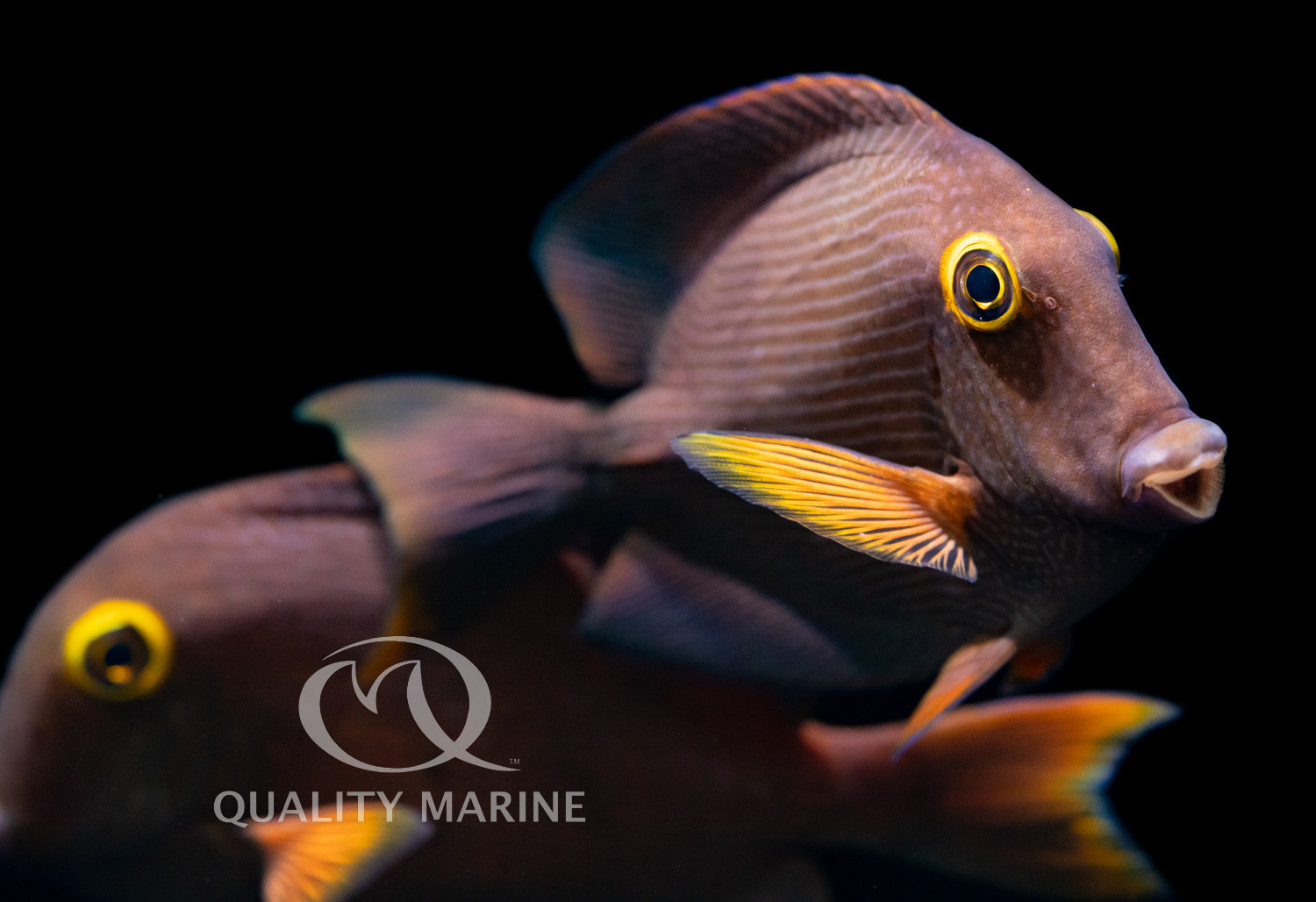Herbivorous Fish Feeding With Nutramar

One of the most significant challenges in marine fishkeeping is replicating, or at least providing an approximate replacement, for their wild diet. Fish that are often wasting away but not refusing to eat are those with high metabolisms that eat throughout the day. Some examples of this include Anthias or Genicanthus angelfish, zooplanktivores that feat continuously on small microcrustaceans or roe in the water column. Herbivorous fish such as Tangs and Rabbitfish fall into this category as well, most are fast swimming fish that need to graze continuously on algae to meet their metabolic needs. It’s a necessary niche on the reef that needs to filled in order to keep algae at bay from over competing coral for resources and territory. Unfortunately in the aquarium setting, these needs simply are not met at the level they need to be. Too often vegetable matter or algae is often regarded as an auxiliary food for these fish, and is not offered as regularly as it should be. Many aquarists attempt to replicate grazing behaviors with timed dry food feeds, such as flaked and pellets, a few times per day which is a good method for many fish but most don’t replicate the necessary nutrients in “pure vegetation” such as Ogo or Nori.
Nori
Nori is a seaweed, that stores well once dried. You’ll want to avoid most market bought nori for human consumption as it is often salted or seasoned with sesame oil in favor of one produced specifically for aquarium fish, such as that sold by the Nutramar brand. Next you’ll want to find a place in the aquarium to feed out the nori. There are several methods, but a common one is magnetic or suction clips. Magnetic is preferred if you are feeding larger, stronger fish that may thrash as they eat. Ideally the clip or clips would be placed on the glass in an area of low or moderate flow, to keep the nori sheet from tearing apart and creating a mess. The density or amount at which you feed the nori will vary based on several factors. These include but are not limited to the amount of herbivores you care for and their size, though do keep in mind you may also have fish that are normally not known to be algae grazers take part in nori feedings. Clowns and even wrasses have been known to go after nori after watching other fish consume it, so keep this in mind and monitor when you first start feeding nori as it may take a few tried to accurately guesstimate the amount. Multiple feedings are preferred to one large one. Large feedings of nori may not be immediately consumed leading to it deteriorating before it can be consumed. This can cause not only a mess but water quality issues depending on the size of the tank.
Ogo
Ogo as it is commonly known when humans consume it, or Gracilaria, is a red algae that is a great source of antioxidants, not to mention beneficial trace elements, as well as high protein levels and essential lipids. Ogo is often sold as live cultures, which is great if you’re trying to grow it (not and easy a feat as with other algae) but unnecessary for feeding utilizations where dried Ogo is acceptable. You can rehydrate dried Ogo prior to placing it in the aquarium if you prefer, a cup of reverse osmosis water should be plenty for a one time feeding. Even the pickiest of herbivorous fish, and even fish that are not primarily herbivores, will often take to the Ogo immediately, so while not as convenient as nori it’s a great food to have in your arsenal. When feeding ogo out it can be placed directly in the aquarium, if your aquarium is a high flow environment, it can be rubber banded to a small loose rock, frag plug or shell temporarily until feeding is complete.
When storing your Nutramar Ogo or Nori, keep it in a dry non-humid location - this means that under your aquarium canopy or under the aquarium itself are not recommended locations. Hydrating nori or ogo prior to the time its ready to feed can cause them to have a severe loss of nutrients or go bad. If you notice after your feed, approximately 5-15 minutes, that there is vegetation left, this is an indicator that you may have fed to much. You can simply remove the leftover foods where possible and alter feeding methods on the next feed.